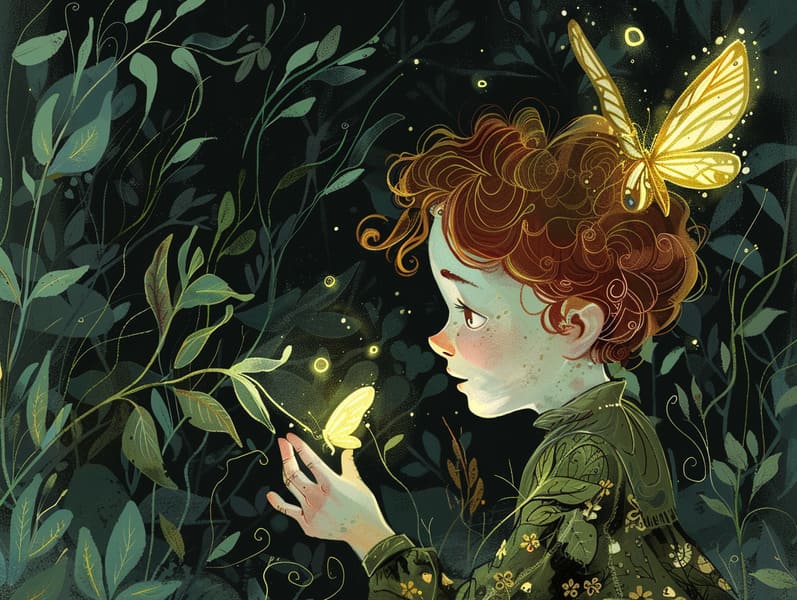
Old fairy tales have long histories. These tales have been passed down from one generation to the next centuries before they were ever written down. They came from a variety of civilizations, including African traditions. They were initially narrated among adults, often carrying themes and messages reflective of the societal norms and beliefs of the time.
Jacob and Wilhelm Grimm, Jacob and Wilhelm (the Grimm brothers), were among the first to gather and publish many of these beloved fairy tales. Their collection, "Grimm's Fairy Tales," included stories like "The True Bride," "Little Brother and Little Sister," and "The True Story of Snow White," which have since become mainstays in the world of famous fairy tales. Similarly, the Danish author's charming narratives, such as "The Story of the Little Mermaid," and "The Duckling that Could," have won hearts worldwide, guaranteeing their place in the pantheon of famous fairy tales.
Though they are centuries old, fairy tales remain as applicable as ever, especially as nighttime stories for kids. These whimsical stories are now available in diverse formats, including vividly illustrated books, charming animations, and web-based fairy tales.
Their enduring popularity can be connected to several delightful features:
Life Lessons: Traditional fairy tales often present important moral lessons. Fairy tales like "The Shepherd Boy and the Wolf" teach the benefit of truthfulness, while "The Race of the Tortoise and the Hare" underline the merits of determination and unpretentiousness. These stories offer little ones clear distinctions between moral and immoral, helping to shape their moral compass in a mild yet profound way.
Sympathy and Perception: Old fairy tales frequently showcase beings facing trials and tribulations, inspiring listeners to identify with their struggles and champion their triumphs. For instance, "The Tale of Beauty and the Beast" demonstrates the benefit of looking deeper to acknowledge the real character of a individual, promoting empathy and recognition.
Cultural Comprehension: Many traditional fairy tales are imbued with the cultural contexts from which they originated. Delving into these narratives can provide delightful insights into different customs, developing a sense of world awareness and comprehension.
Imagination and Creativity: The supernatural elements in traditional fairy tales—magical beings—fire up children’s creative minds. These narratives carry readers to fantastical realms, enlivening fantasy dreams and a sense of delight that endures a lifetime.
Old fairy tales are not only whimsical but also teaching. They function as charming tools in building various mind and heart abilities in young ones. When classic fairy tales are recited, they nurture speaking abilities by bringing new terms and meanings and complex sentence structures. This practice also strengthens auditory skills and mindfulness, as young readers stay focused, eager to see what happens next.
Furthermore, contemplating the themes and characters of traditional fairy tales can develop analytical skills and critical thinking. Young ones learn to discover patterns, guess what will happen, and figure out cause and effect. These talks also promote little ones verbalize their thoughts and feelings, adding to their emotional intelligence.
In today’s high-tech era, the proliferation of digital storybooks has made these tales more available than ever. Web platforms and software make available broad selections of children's fairy tales that can be enjoyed or played anytime, anywhere. Fairy tales narrated are particularly liked, giving an charming way for the young to immerse in these fantastical tales. Read-aloud books and narrated videos guide characters and settings to life, often joined by bewitching musical scores and background music that improve the story journey.
The enduring charm of timeless fairy tales lies in their ability to shift to new eras while sustaining their core values. Contemporary reimaginings of these narratives often highlight more varied protagonists and modern settings, making them understandable to today’s audience. However, the central morals of guts, empathy, and rightness remain unchanged, continuing to strike a chord with listeners of all ages.
Old fairy tales also offer a sense of serenity and recognition. They bring a structured narrative with a evident beginning, middle, and end, often concluding with the resolution of conflicts and the triumph of virtue over vice. This consistency can be encouraging for the young, distributing a sense of stability in an fluid world.
Timeless fairy tales continue to entrance and enlighten new generations, maintaining their magic and impact in modern society. As kids' bedtime tales, they furnish a perfect blend of fantasy and learning, fostering moral values, empathy, and creativity. The accessibility of online storybooks and the favor of fairy tales read out loud secure that these traditional tales remain accessible to new generations.
By perpetuating and distributing these narratives, we continue to celebrate the rich tapestry of fables and cultural heritage. Whether you are accessing a richly illustrated book, discovering a digital collection, or playing an spoken story, the majesty of popular fairy tales is always within reach. These fairy tales highlight of the more info enduring presence of tales and its ability to join us across centuries and lands.
No matter if you are discovering a colorful picture book, perusing a digital collection, or hearing an audio story, the spell of old fairy tales is always within reach.
These stories reveal of the lasting presence of tales and its ability to draw us together across eras and regions, making a tie that captivates and teaches alike.